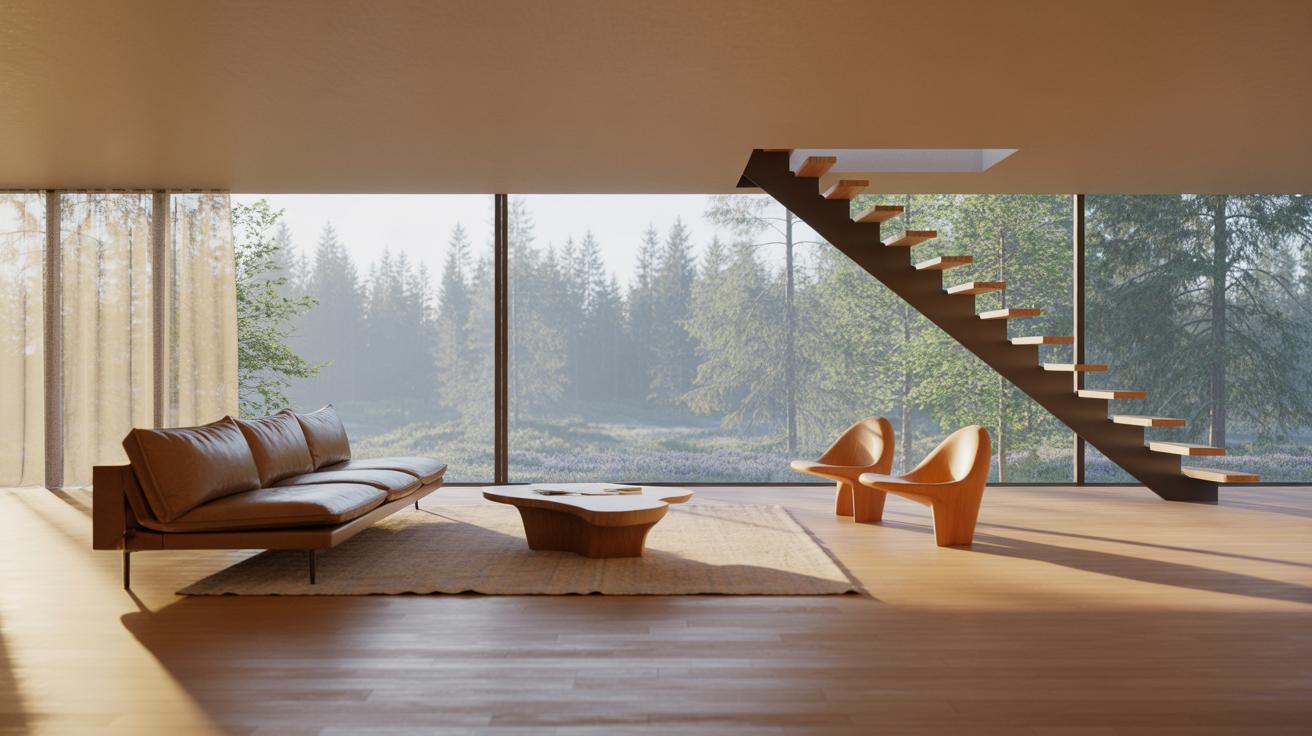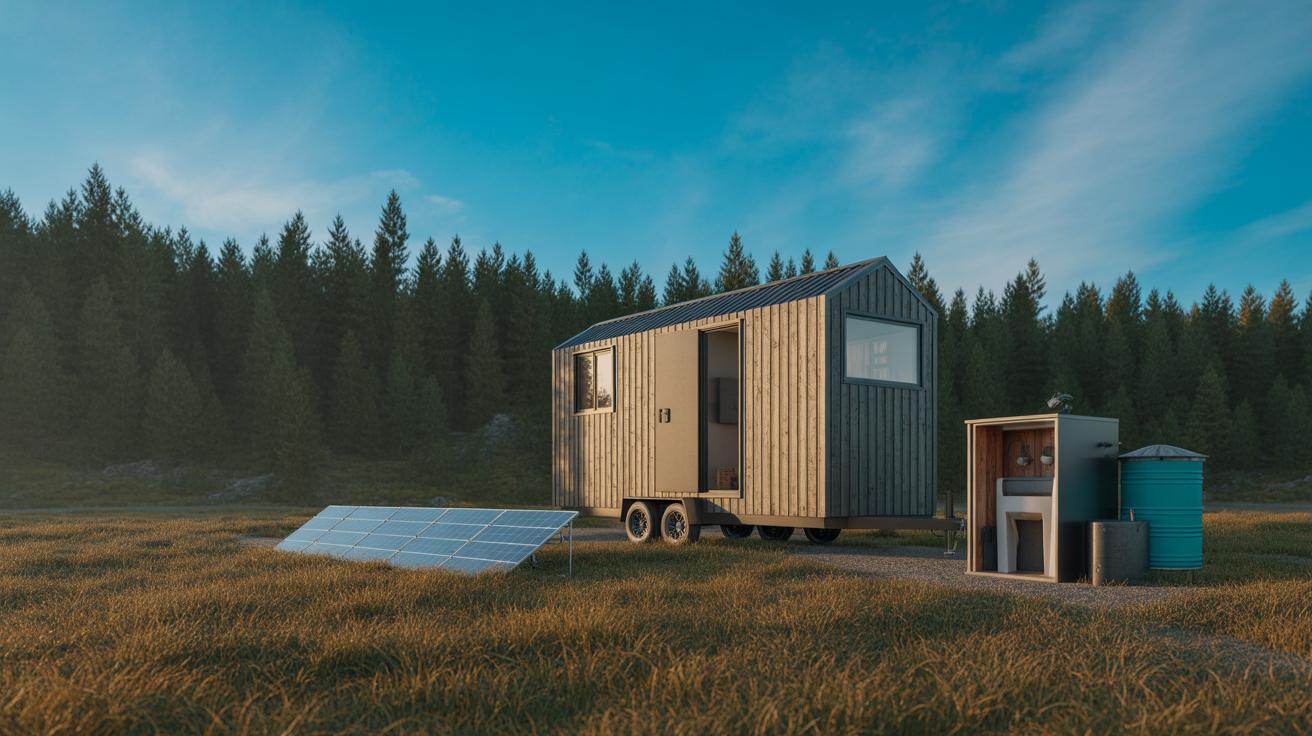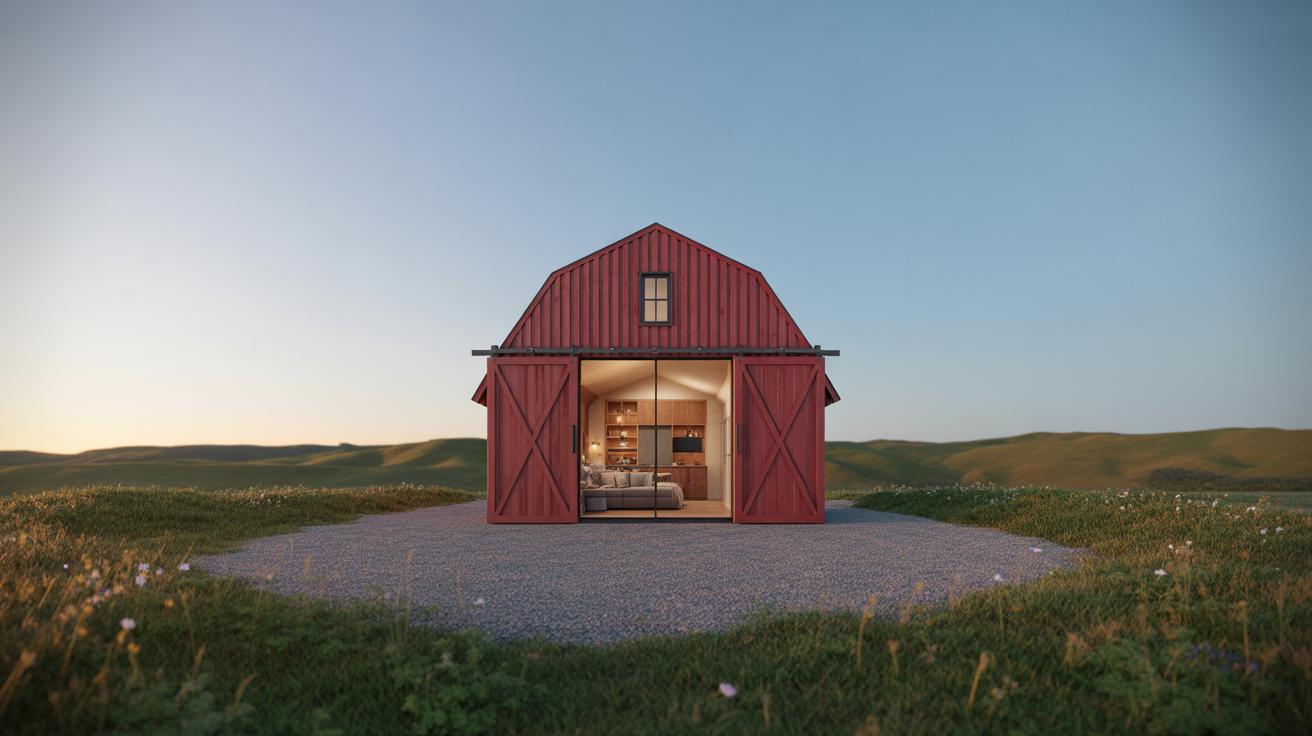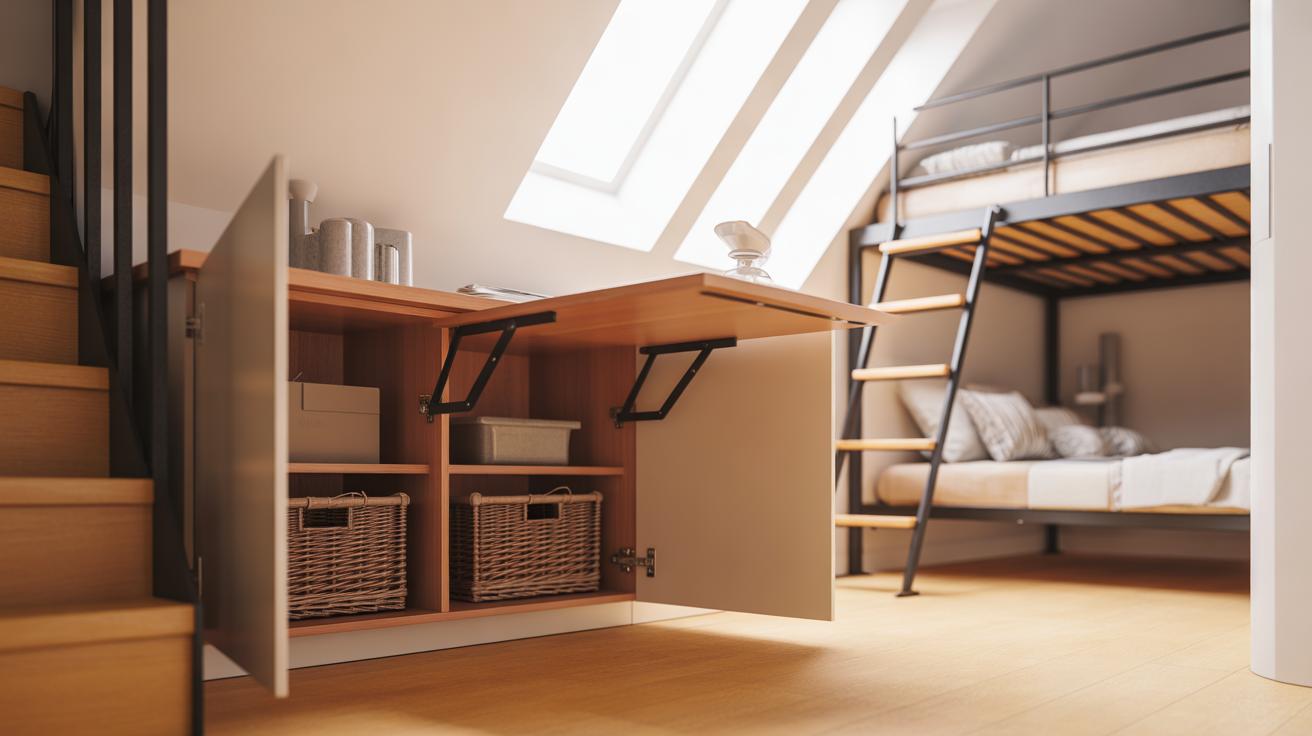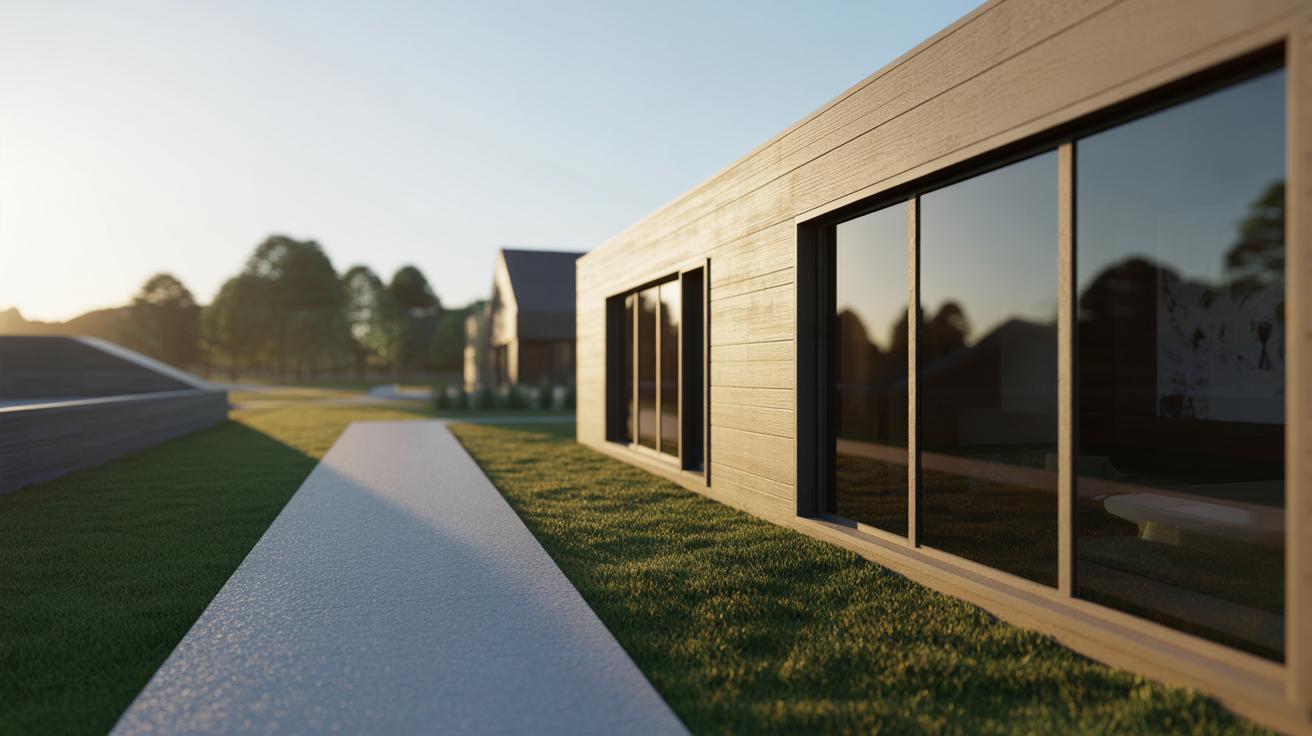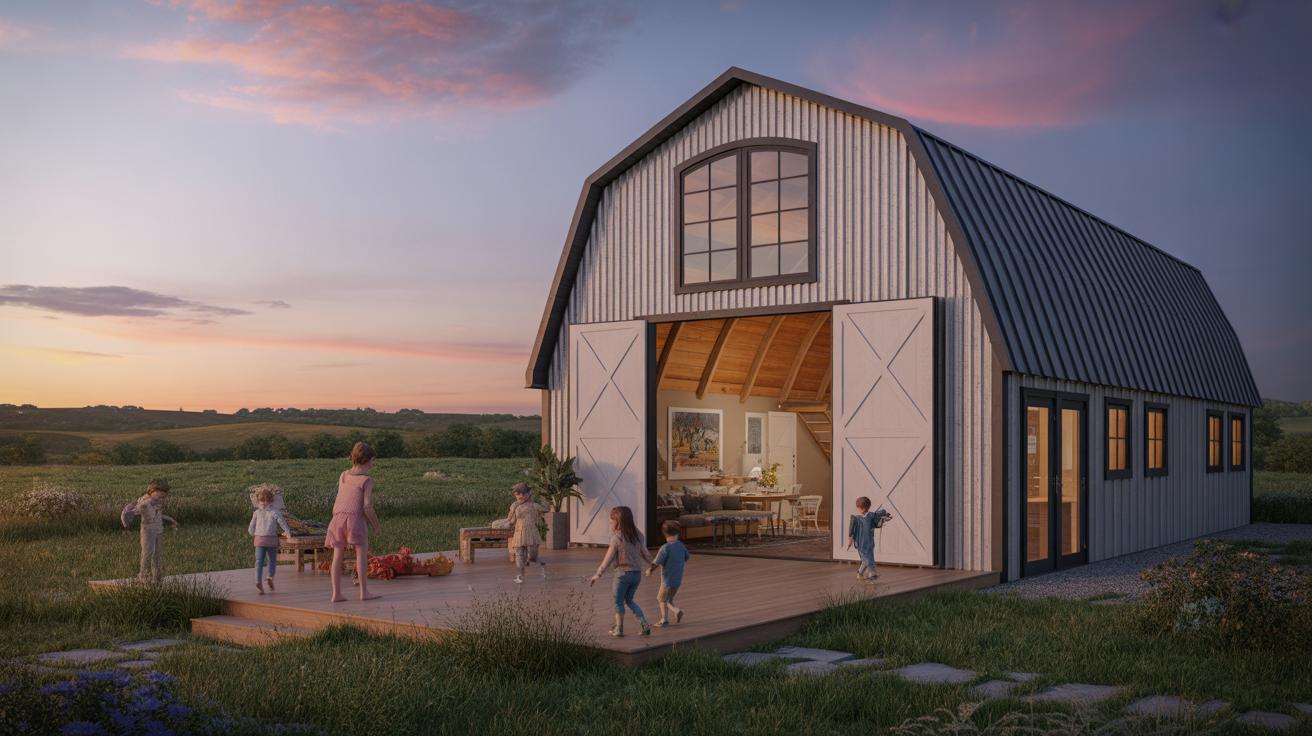Introduction
The design of modern cabins has transformed how people view home interiors, blending simplicity with functionality. These interiors focus on clean lines, open spaces, and a harmonious connection to nature. You might wonder how these elements come together to create spaces that feel both welcoming and stylish. Modern cabin interiors typically incorporate natural wood finishes combined with modern materials for a fresh, yet warm appearance.
In this article, you will find inspirations to guide the creation or renovation of a cabin interior that fits your modern lifestyle. The highlights include space planning, selecting materials and colors, and features that maximize comfort and style. When designing your modern cabin, consider your lifestyle needs and how modern design principles can support your comfort while emphasizing aesthetic appeal.
Understanding Modern Cabin Interior Design
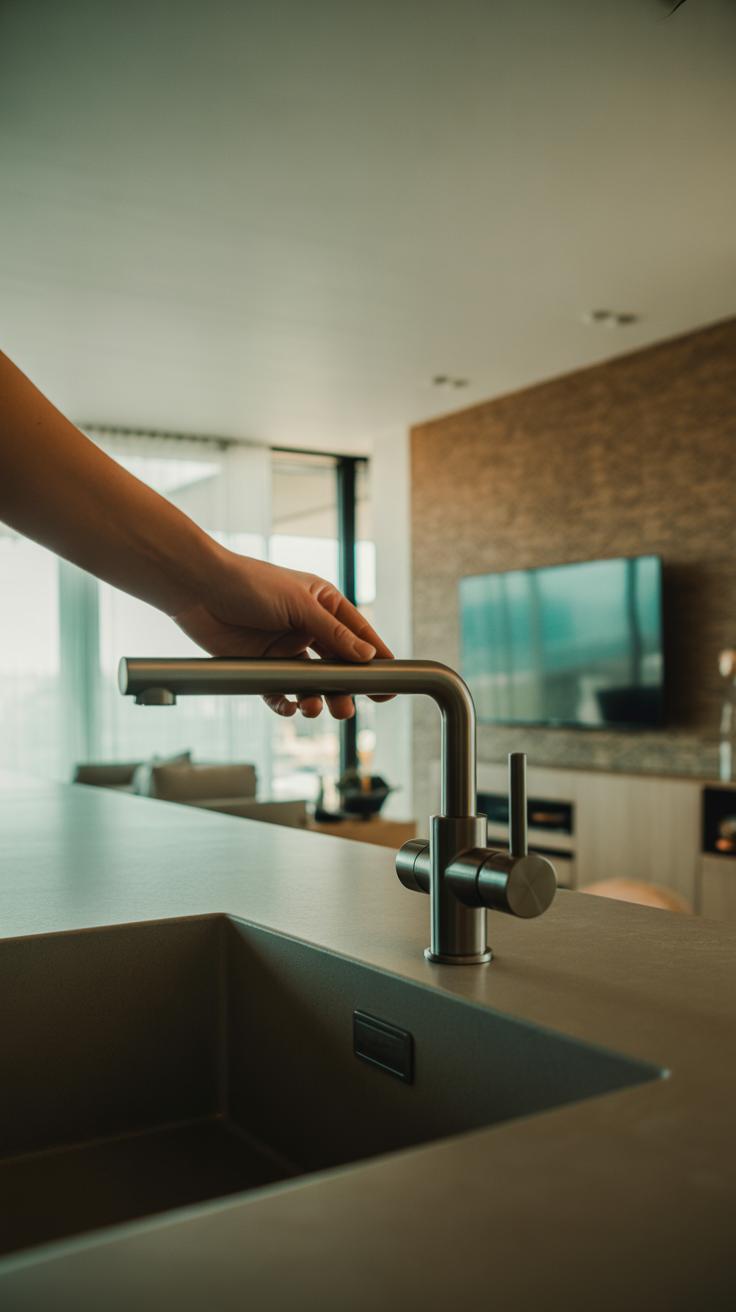
Modern cabin interior design centers on simplicity, functionality, and a strong link to the natural world outside. Keep your spaces uncluttered and straightforward to create a calm, inviting environment. Every item should serve a purpose, avoiding excess that distracts from comfort and usability. Think about how you live in your cabin. How can the layout and features support your daily activities without adding complexity?
Focus on clean lines and practical solutions. Storage should blend smoothly into the design to keep your space tidy. Lighting must brighten without overwhelming the natural light that connects your cabin to its surroundings. This approach helps you make the most of limited spaces while keeping the focus on nature.
Modern cabin design invites nature inside. Large windows, natural materials, and earthy colors create seamless transitions between indoors and outdoors. When your cabin feels part of the landscape, your experience deepens. Why settle for a synthetic retreat when you can create a genuine connection with where you live?
Minimalism and Functionality
Minimalism in modern cabins means keeping only what you need and love. This clears space for movement and peace. Functional furniture plays a key role. Choose pieces that offer multiple uses, such as beds with storage drawers or tables that fold away. Such designs fit smaller cabins and prevent overcrowding.
Consider your lifestyle. Do you need extra seating? A workspace? Opt for items that adapt to your activities without taking up too much space. Minimalism also reduces cleaning and maintenance, saving your time for outdoor adventures. Ask yourself: which pieces truly enhance your daily life in the cabin?
The focus on function does not sacrifice style. Simple shapes and neutral tones keep the look modern while remaining cozy. Let your furniture support you, not stand in the way. This thoughtful selection reshapes your cabin into a practical, welcoming place.
Connection with Natural Surroundings
The link between a modern cabin’s interior and its natural setting starts with windows. Large, unobstructed panes bring sunlight and views inside. Aim for floor-to-ceiling or corner windows to create open sightlines. The presence of natural light changes the mood and reduces the need for artificial lighting during the day.
Natural materials deepen that connection. Use wood, stone, and leather in your furniture and finishes. These materials age with character while reflecting the environment outside. How can texture and tone in your cabin’s decor echo the landscape around you?
Open layouts help as well by avoiding barriers between living spaces and outdoor features like patios or decks. You might arrange seating to face a forest or lake view, making nature part of your daily experience. The closer you feel to your surroundings, the more restful your time in the cabin becomes.
Materials and Finishes for a Modern Cabin
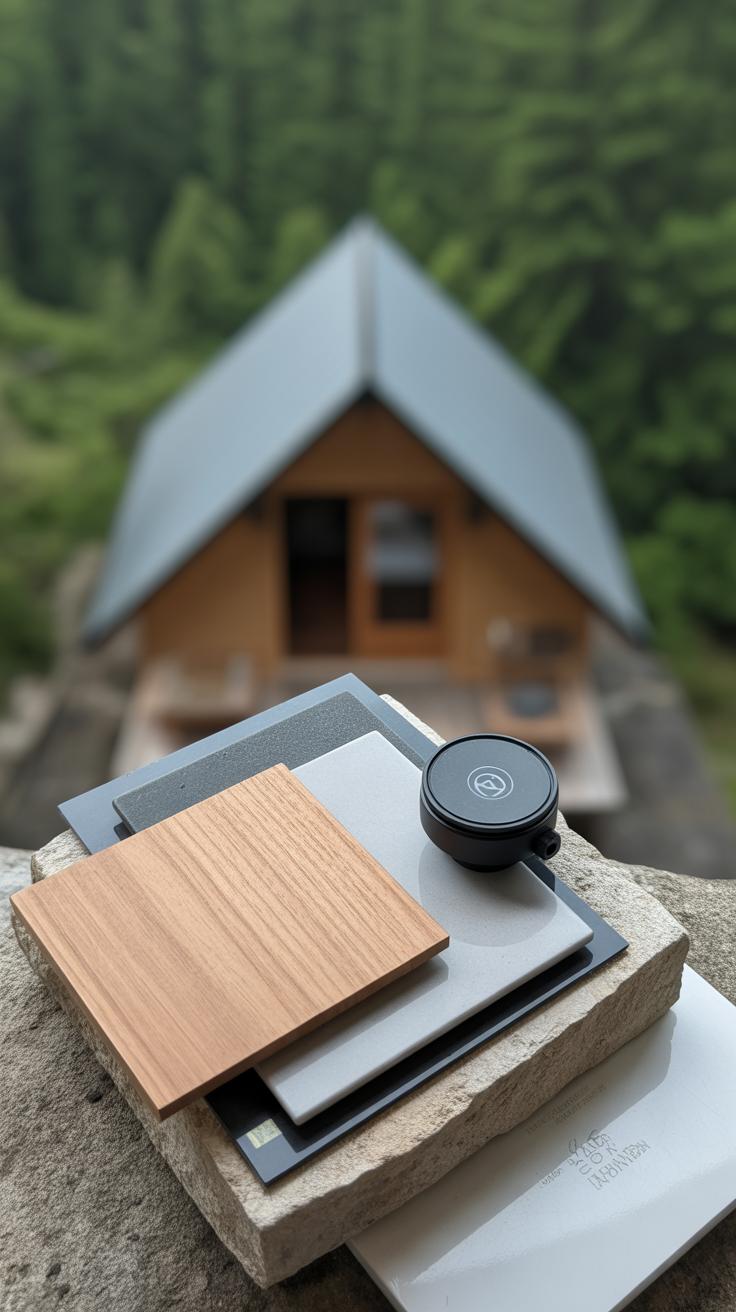
Wood remains a central material in modern cabin interiors. It adds warmth and natural texture while maintaining a clean, simple look. Choosing the right type of wood can affect how the space ages and feels. Hardwoods like oak and maple offer durability and a smooth finish that fits modern design. Softer woods such as pine bring cost-effective options but may require better protection against wear. Finishes also matter—matte or satin sheens preserve the wood’s natural appearance, while gloss coatings create a sharper, contemporary edge. What kind of wood finish fits your lifestyle and style best?
Modern cabins often mix wood with steel and glass to create a balanced and sharp aesthetic. Steel provides structural strength and a cool contrast to wood’s warmth. Its sleek lines can outline staircases, railings, or furniture frames without overwhelming the interior. Glass expands space visually and connects the cabin with its surroundings through large windows or sliding doors. Combining these materials lets you maintain style and function, promoting clean lines and open, light-filled spaces. How can you combine steel and glass with wood to best suit your cabin’s character?
Wood as a Key Element
Wood forms the backbone of any cabin interior you want to feel modern yet inviting. Its natural grains add unique patterns that make every piece different. Choose woods that resist scratches and dents if your cabin sees heavy use. For example, hickory and walnut offer hardness and rich colors. You can go for unfinished wood for a raw, organic look or stained wood to match your color scheme and protect the surface. How often do you want to maintain your wood surfaces? That question helps decide between untreated or sealed wood.
Complementary Modern Materials
Steel and glass pair well with wood by introducing contrasting textures and transparency. Steel elements contribute to the cabin’s structure and act as a design feature with their bold, straight forms. They can frame windows or support open shelving, enhancing the room’s flow. Glass brings in natural light and opens views to the outdoors, making rooms feel bigger and brighter. Combining these materials keeps the interior feeling current and uncluttered. Where could you use steel or glass to break the wood’s texture and keep your space balanced?
Color Schemes that Enhance Your Cabin
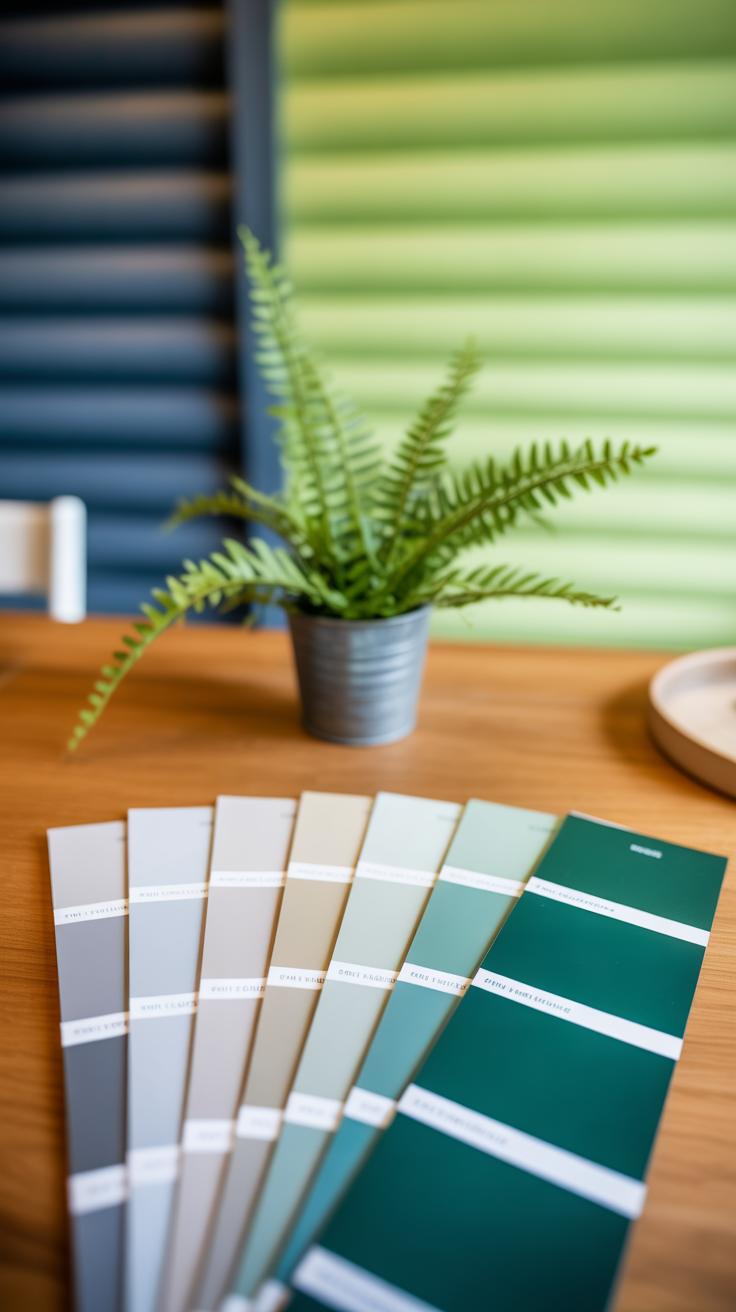
Choosing the right colors shapes how your cabin feels and functions. Modern cabins benefit from color palettes that support their clean lines and open spaces. Neutrals and earth tones lay a calm foundation that complements wood, metal, and glass elements already in the space. These colors help balance natural textures and bring warmth without cluttering the room visually.
Introducing accent colors provides a controlled way to express personality and avoid a bland interior. Thoughtful splashes of bold shades can create focal points without overtaking the room. Consider small touches like cushions, artwork, or a statement rug. Your accents become an opportunity to connect the cabin’s modern vibe with personal style, making the space both inviting and tailored to your taste.
Neutral and Earth Tones
Neutral and earth tones build a peaceful atmosphere essential for a modern cabin. Colors like beige, soft gray, and warm taupe allow natural light to bounce gently around the room. They also pair well with wooden elements, reinforcing a sense of calm and stability.
Earth tones bring the outdoors inside. Greens, muted browns, and terracotta hues create visual harmony with the surrounding landscape. These shades reduce visual noise, making rooms feel larger and more inviting. How could your cabin change if every surface encouraged relaxation? Using these colors helps maintain a steady and balanced mood throughout your space.
Accent Colors that Make a Statement
Accent colors can energize your cabin without overwhelming it. Opt for deep navy, burnt orange, or emerald green to add life where your eyes naturally fall. Placing these colors on furniture pieces, lamps, or decorative objects helps ground the modern design with bursts of interest.
Limiting accents to one or two areas avoids a cluttered look. Ask yourself where your attention should go. For example, a vibrant chair in the living room or a colorful backsplash in the kitchen can become a conversation starter. Using bold hues thoughtfully gives your cabin character while keeping the overall design streamlined and functional.
Lighting Strategies for Modern Cabins
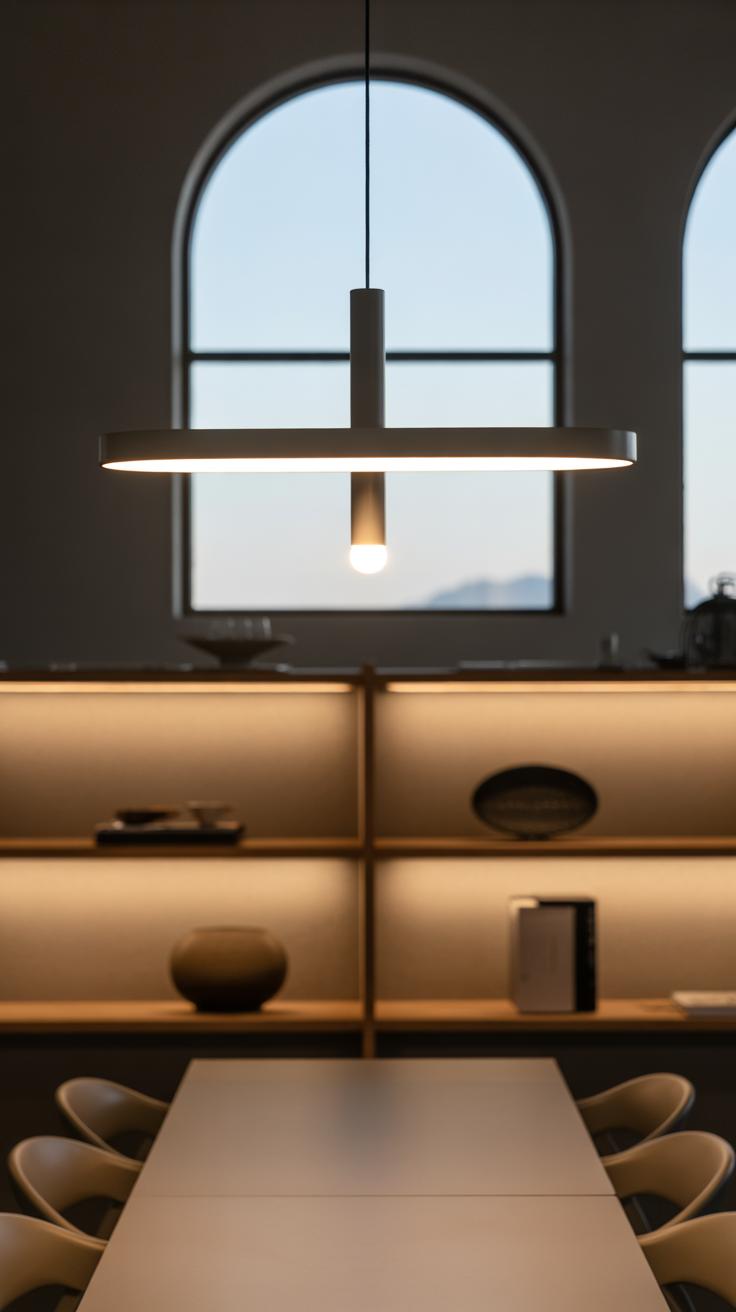
Good lighting shapes the mood and function of your modern cabin. You want plenty of natural light to connect with the outdoors while keeping the cabin warm and private. Large windows paired with skylights work well, but they need careful placement and quality insulation to avoid heat loss. Think about window treatments that offer privacy without blocking light, like sheer curtains or adjustable blinds.
Indoor lighting should mix different types to fit your needs. Ambient lighting creates a soft background glow. Task lighting ensures you can see clearly where you read, cook, or work. Accent lights highlight art or architectural features. Layering these lights lets you adjust the atmosphere throughout the day. How do you plan your cabin’s lighting to fit your lifestyle?
Maximizing Natural Light
Design windows to bring in as much daylight as possible without losing warmth. Floor-to-ceiling windows frame views and add brightness but use double- or triple-pane glass to improve insulation. Skylights bring light to darker spots but should include built-in shades to block heat in summer and retain it in winter.
Position windows strategically to catch sunlight during the day. South-facing windows pull in the most consistent light. Consider clerestory windows placed high on walls to provide privacy while letting light flood in. You can also install frosted or tinted glass to maintain privacy without sacrificing brightness.
Layered Lighting Techniques
Use ambient lighting like recessed LEDs or ceiling fixtures for general illumination. Add task lights near your kitchen counters and reading chairs to avoid strain. Pendant lights over tables or desks balance function with style. Accent lighting, such as wall washers or spotlights, can draw attention to a statement wall or cozy nook.
Dimmer switches let you change the lighting level to suit different moods or times of day. Combining layers allows your cabin to feel open and inviting while meeting practical needs. Are there areas in your cabin needing more focused light or a softer touch?
Space Planning and Layout Optimization
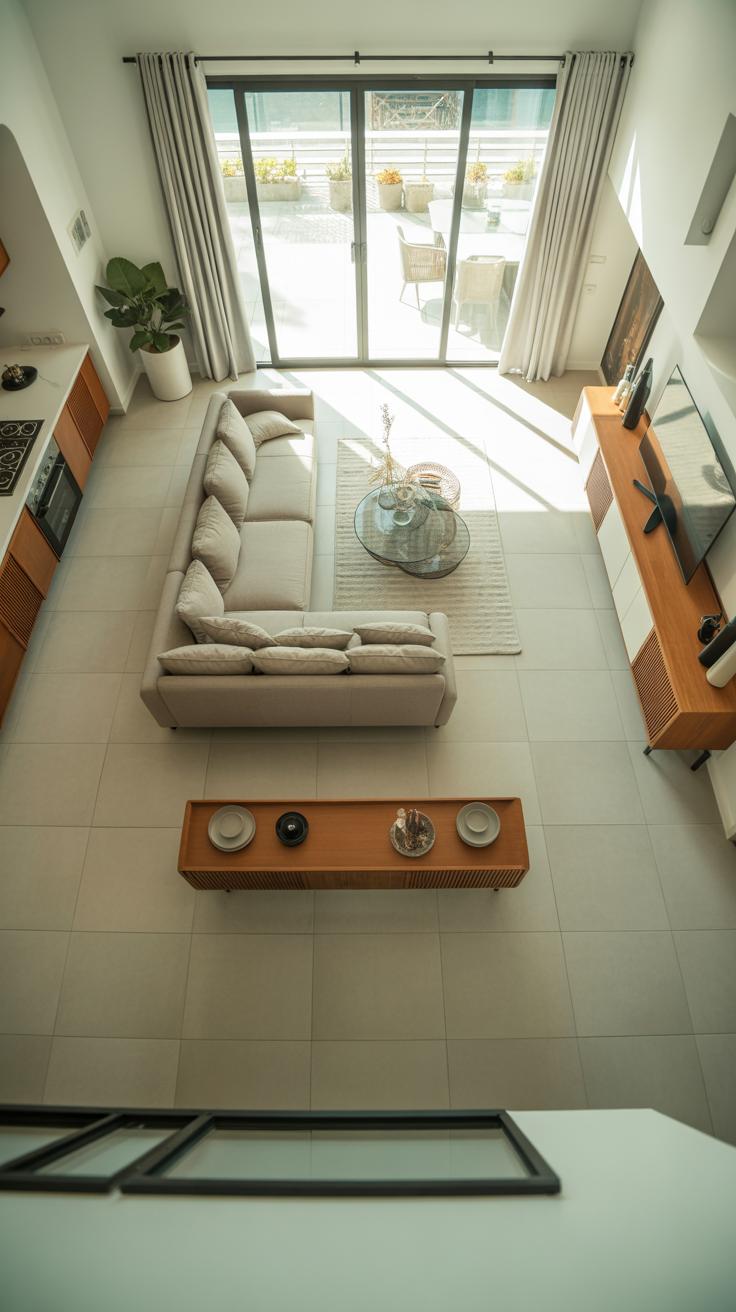
Designing a modern cabin means making every inch count. You often face limited space, so organizing it well will boost both comfort and usefulness. Think about how you move through your cabin. Is there enough room to walk without feeling cramped? Arranging furniture to create clear paths helps you avoid crowded spots.
Consider storage that fits naturally into the design, such as built-in shelves or under-seat compartments. This keeps clutter away and frees up floor space. Asking yourself where you spend most of your time can guide where to place key furniture pieces, so the cabin feels tailored to your lifestyle.
Do you need a space that adapts to different activities? Planning zones for working, relaxing, and dining can make the cabin function smoothly without overcrowding. The right layout balances open areas with cozy corners, giving you a sense of space while meeting your daily needs.
Open Floor Plans
An open floor plan makes small cabins feel larger. By removing dividing walls, you create flow between rooms like the kitchen, dining, and living areas. This openness lets natural light travel freely, brightening every corner and cutting down on dark, cramped spots.
Open layouts provide flexibility in how you arrange furniture. You can easily switch from a social setup with plenty of seating to a quiet reading nook. This adaptability means your space changes with your needs without requiring major renovations.
Think about how you use your cabin during different times of the day. Would a single open room help you host friends or focus on a hobby? Letting spaces blend together encourages more interaction and a less boxed-in feeling.
Multi-Functional Furniture
Furniture that serves more than one purpose is key in modern cabins. A sofa bed offers guests a place to sleep without extra rooms. Tables with hidden storage keep essentials close but out of sight. This saves room and cuts down on clutter.
Choose pieces that fit your style while working hard for your space. For example, stacking stools or fold-away desks provide seating or workspace only when you need it. This means your cabin stays open and welcoming, not overcrowded.
Ask yourself what functions your furniture should serve. Could your coffee table double as a storage box? Could your dining bench hide blankets inside? Multi-functional items help you keep a clean, modern look while using space smartly.
Incorporating Modern Technology Comfortably

You can make your cabin both cozy and smart by bringing in modern technology that fits well with a compact space. Smart home systems help you control lighting, heating, and security from your phone or voice commands. This makes life easier, especially when you’re away from home or want quick adjustments without moving around much.
Energy-efficient appliances save power and reduce utility costs. Choosing these helps you meet sustainability goals while keeping your cabin functional and comfortable. Think of refrigerators, washers, or even water heaters designed to use less energy but work effectively.
How can technology help you get the most from your cabin? By picking tools that blend in smoothly with your design and fit your routine, you make your space more livable without sacrificing style or simplicity.
Smart Home Integration
Smart home systems let you manage lighting, heating, and security with ease. For cabins, this means you can set the perfect mood or temperature before you arrive. Remote control helps you save energy by turning off lights or adjusting heat if you forget to do so.
Consider installing motion sensors that trigger lights only when needed. A smart thermostat learns your preferences to keep rooms cozy without wasting power. Security cameras and alarms give peace of mind by monitoring your cabin from anywhere.
Do you want to improve safety and comfort without adding clutter? Smart home integration keeps your cabin streamlined, making everyday living simpler and more secure.
Sustainable and Efficient Appliances
Energy-efficient appliances reduce your cabin’s environmental footprint while adding daily convenience. Models with Energy Star ratings use less electricity and water, which lowers bills and preserves resources.
Look for compact washers, fridges, and cooktops that suit smaller cabin spaces. Some appliances have smart features like eco-modes or delayed start options that help you control energy use better. Solar-powered options can also support off-grid living.
How does using efficient appliances change your cabin life? They help you maintain a modern lifestyle without overusing limited resources. Choosing the right tools supports a balance between comfort and responsibility in your compact retreat.
Decor and Accessories to Personalize Your Cabin

Your cabin’s modern look benefits when you choose decor that fits the clean, simple design but also shows who you are. Start by picking items that have sharp lines and natural materials like wood, metal, or glass. These choices keep the space feeling open and light.
Think about using functional pieces that double as decor. A sculptural floor lamp or a sleek bookshelf can bring both style and utility. Avoid too many small objects that crowd surfaces and interrupt the flow.
Select items that bring meaning to you. Maybe a handmade pottery piece from a favorite trip or a set of vintage books can create connection without clutter. Ask yourself what adds to your everyday comfort and reflects your tastes.
Focus on quality over quantity. A few well-chosen accessories will make your cabin feel more personal and grounded while still staying true to modern simplicity.
Textiles and Rugs
Textiles and rugs are powerful tools to soften the sharper edges of modern cabin interiors. Look for natural fabrics like linen, wool, or cotton to add warmth without overwhelming the simple design.
A large area rug can define a seating area and bring in subtle patterns or color. Stick to muted tones or geometric designs that support the clean aesthetic. Layering smaller throws or pillows creates comforting textures that invite you to relax.
Think about scale and balance when selecting these items. Large, bold patterns might feel too busy. Instead, pick pieces that complement your furniture and the natural wood tones often found in cabins.
How can you introduce cozy texture without disrupting the sleek look? Look for textiles that make the room feel lived-in but still polished.
Artwork and Personal Touches
Choosing artwork for a modern cabin means balancing personality with simplicity. Select pieces that inspire you but don’t crowd the walls or create visual noise. Black and white photography or minimalist paintings pair well with modern design principles.
Personal objects like heirlooms or travel souvenirs gain impact when displayed thoughtfully, such as on a single shelf or in a shadow box. Group fewer items carefully rather than scattering many small keepsakes throughout the space.
Consider how your art and personal touches interact with light and space. Can you create focal points without interrupting the room’s flow? Is each piece purposeful and meaningful?
By curating your belongings with intention, your cabin reflects your identity while maintaining a clean, modern feel.
Sustainable Practices in Modern Cabin Interiors
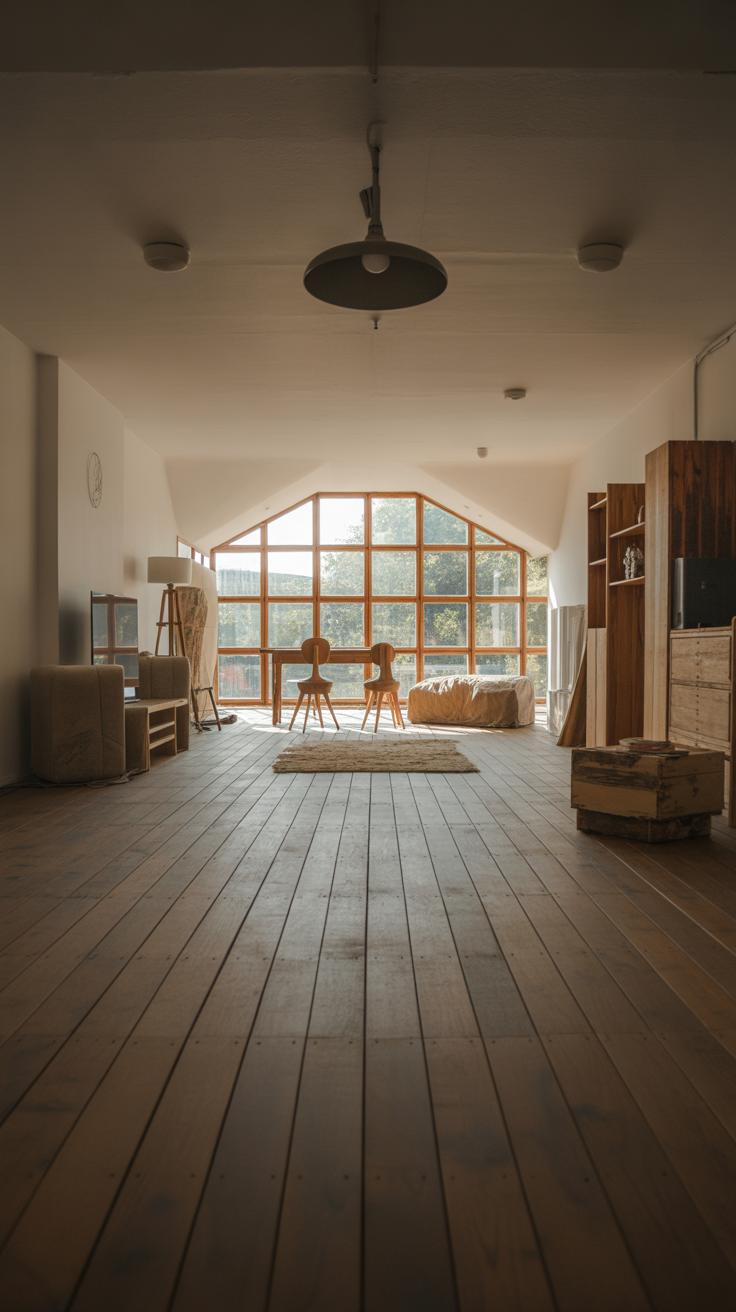
Designing your modern cabin with sustainability in mind affects more than just aesthetics. Every choice, from materials to energy use, impacts the environment and your living experience. Choosing eco-conscious options can lower your carbon footprint and reduce long-term costs.
Using sustainable materials ensures the cabin retains its appeal without harming nature. Effective energy strategies help keep the space comfortable while cutting down on waste and emissions. Waste reduction depends on thoughtful planning in construction and daily use.
Have you considered how each decision in your cabin design either adds to or lessens environmental strain? Focusing on sustainable design processes makes your cabin a healthier place to live while preserving resources for the future.
Eco-Friendly Materials and Finishes
Reclaimed wood stands out as a practical material in modern cabin interiors. It brings character and warmth without the environmental cost of harvesting new timber. Each reclaimed board carries a story, adding depth to your design while reducing waste.
Low-VOC (volatile organic compound) finishes protect indoor air quality. These finishes release fewer harmful chemicals, ensuring your cabin remains a healthy space. Choosing paints and sealants with low VOC content protects both your family and the planet.
Have you explored where your materials come from and their effect on the environment? Simple shifts in sourcing can shape a safer, more natural cabin environment.
Energy Conservation Techniques
Insulation plays a key role in maintaining warmth during cold seasons and coolness in summer. Investing in high-quality insulation reduces energy use by limiting heat transfer.
Natural ventilation lowers reliance on mechanical cooling. Designing openings thoughtfully lets fresh air flow through, enhancing comfort while saving electricity.
Installing solar panels or small wind turbines can provide clean, renewable energy. These systems cut your carbon footprint and can lower utility bills over time.
Have you evaluated how your cabin balances energy efficiency with comfort? Small changes in design can have significant impacts on energy use and environmental responsibility.
Conclusions
The insights shared here help you recognize key aspects of creating modern cabin interiors. You learned about balancing natural and modern elements for a stylish yet inviting atmosphere. Does your cabin interior reflect your personality and lifestyle? Using practical techniques for layout, lighting, and color enhances the space’s functionality and look.
You are now equipped to shape a sleek modern cabin interior that serves as a retreat and a statement of contemporary living. Implement the ideas to transform your space step by step. Where will you begin your design journey? Consider focusing on one area to make meaningful improvements and expand from there.


